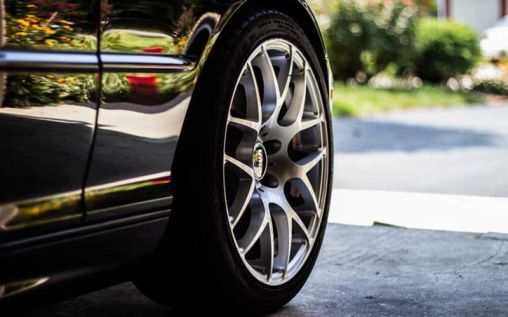To Buy RWD Or Not RWD, That Is The Question
Posted by admin at 11 April 2018, at 15 : 35 PM

Since the dawn of cars, one of the longest standing debates across the world of motoring has been to rock rear wheel drive or enjoy front wheel drive?
Okay, that’s not strictly true given front wheel drive cars weren’t introduced stateside until 1966 when the Oldsmobile Toronado first hit the streets. But, since then, this configuration has grown in popularity and brought about a whole new question for car-buyers.
So, to help you out, we’ve pulled together a list of pros and cons of each that should make your next stroll across a car dealer’s forecourt a whole lot easier:
Rear Wheel Drive
It doesn’t matter how mainstream front-wheel drive may get, powering the rear wheels will always be the signature move of sports cars and luxury motors. It’s the layout that balances a car’s weight a lot more evenly and that makes for much better handling – in the dry. The reason for this caveat is simple: RWDs struggle any time the surface turns a bit rubbish. Seriously.
Snow, ice, rain, loose gravel, anything like that and that smug feeling you get from owning a RWD will be wiped away as you a) fail to get off your driveway, b) spin out of control or c) cause an accident and find yourself swapping details with someone who’s heard of rueziffra.com. That said, staying home in the poor weather is a pretty good trade off because nothing is better than taking your RWD out in the sunshine and beating other cars off the line thanks to your improved grip and sweet acceleration.
The other major advantage is the rugged and simple design, especially if you are rocking a solid axle which will mean you can enjoy your car’s talents without worrying about expensive repairs. Accidentally hitting a curb is no longer your nemesis, unlike it is in FWD motors.
Front Wheel Drive
Let’s get straight to the big plus point shall we – the economy. Not just in terms of running costs but the purchase cost too. The reason for this is simple: FWD cars are much cheaper to design and build thanks to there being fewer parts. Oh, and that drivetrain is way less fiddly when it comes to the assembly line. As for the cheaper running costs, these types of cars weigh a lot less than their RWD counterparts and that allows for better fuel efficiency.
The other major benefit of a FWD car is their ability to deliver in all weather conditions. It’s all to do with the front wheels pulling your car along as opposed to the rear wheels pushing it, while the engine position boosts grip too.
The bad news is, well, they aren’t quite as good at handling because they are a tad nose-heavy, something that gets worse the faster you go or more you have loaded. They are also relatively fragile, meaning they are more susceptible to injury from not a great deal of hardship. Yup, we’re talking about hitting the curb and wrecking something vital.
Of course, what all this means when it comes to buying one or the other is, well, your decision will be made on your driving style and your budget more than anything.
